Tianying Yu is one of 12 artists selected as a Gallery 263 2023–2024 Small Works Project artist. This project presents artwork in flat files at the gallery and on our website. Visit Yu’s Small Works Project page →
Can you tell us a little about yourself?
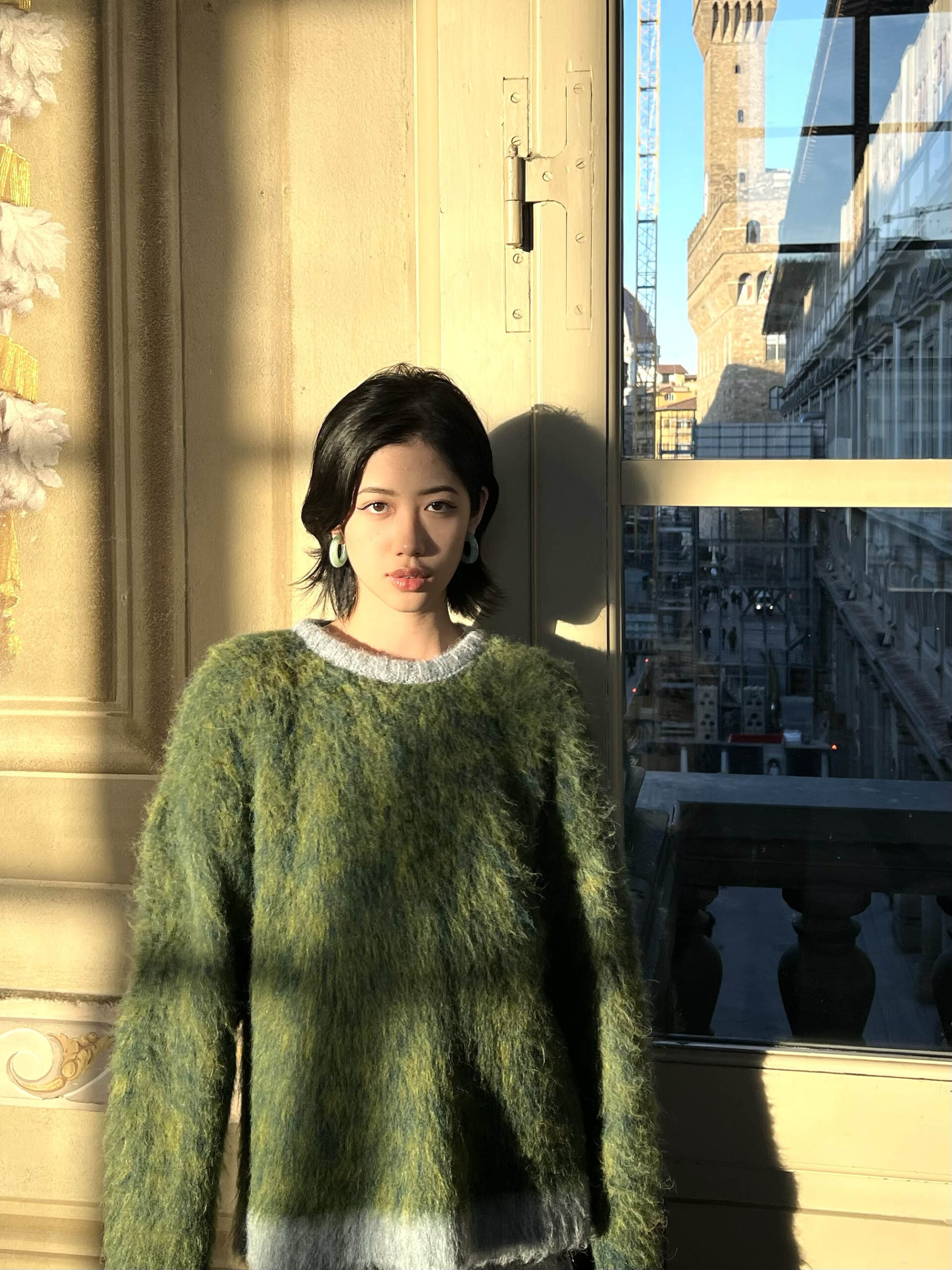
Hi, I am Tianying Yu. I am an artist born in Shanghai and currently based in New York. I have been pursuing art for six years in New York, and it looks like I am gradually growing up. I am a person who always captures many subtle moments in my life: what people say on the street, golden hour light, or even some really random things. These things make me happy and also inspire me a lot in my artwork. Sometimes, I hope my art can make my audiences feel they can lie on the grass and enjoy my color palette and the romantic and gentle things happening around them. I feel this little happiness not only is around my art but also can be my simple life goal.
What kind of art do you make?
I make illustrations a lot. The illustration area is also what I studied when I first stepped professionally into arts. I love to explore more emotions from my life and then translate them into my visual language. I do lifestyle illustrations a lot, and from now on, I will love to do illustrations combined with some graphic design.
What concepts does your art explore?
I explore the fusion of digital software and traditional art techniques. I delve into the concept of “formats,” not only within computer systems but also in broader artistic and life contexts. Formats can be pre-existing, self-created, or even unexpected, challenging conventional notions. This theme guides my artistic journey, prompting me to consider how these formats influence and shape my creative process. By combining my traditional art background with software, I aim to uncover unique expressions and push the boundaries of what artistic formats can be.
Can you tell us about the work you have on view in your flat file drawer at the gallery?
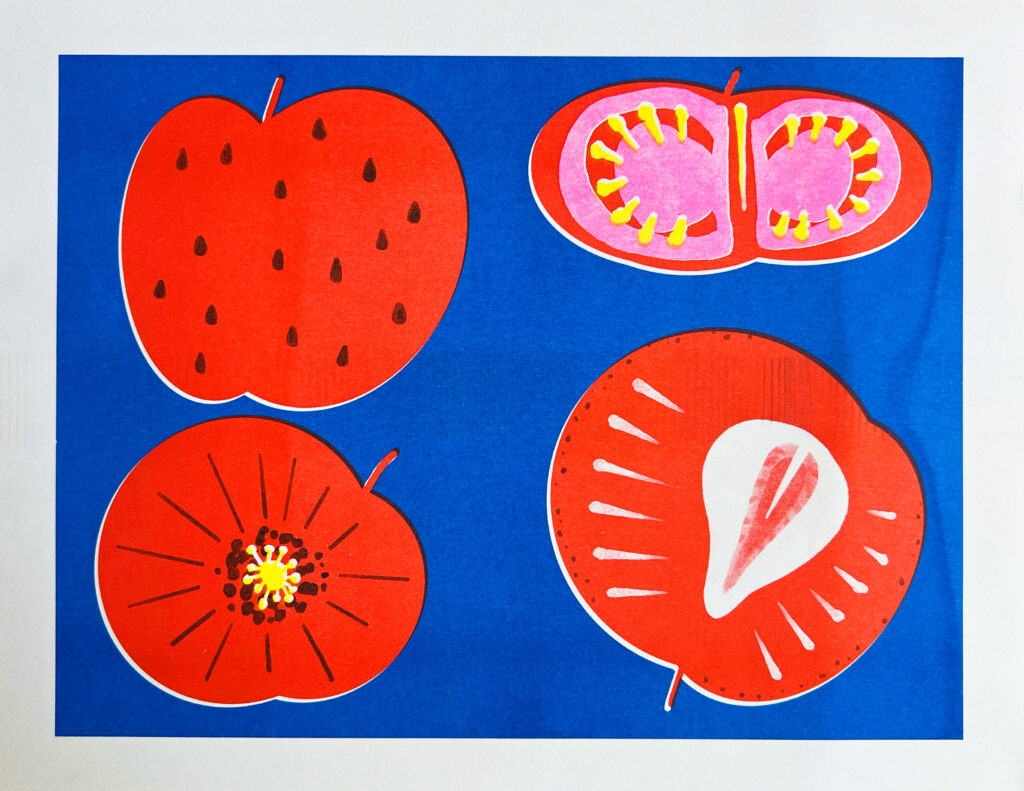
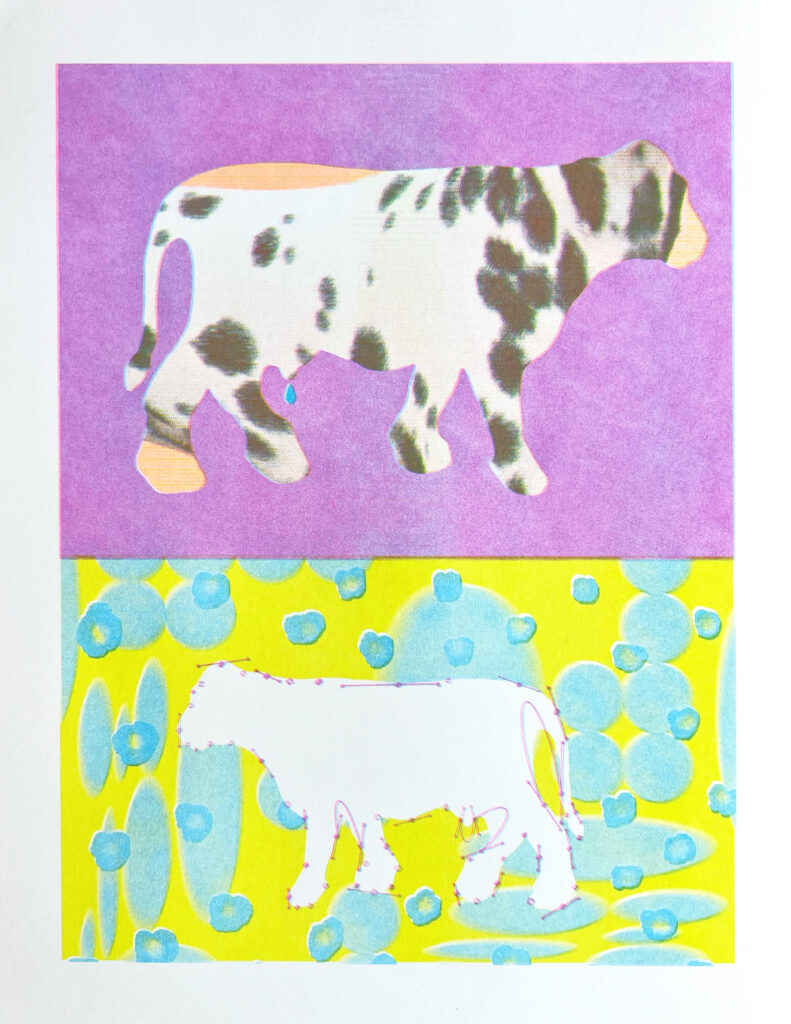
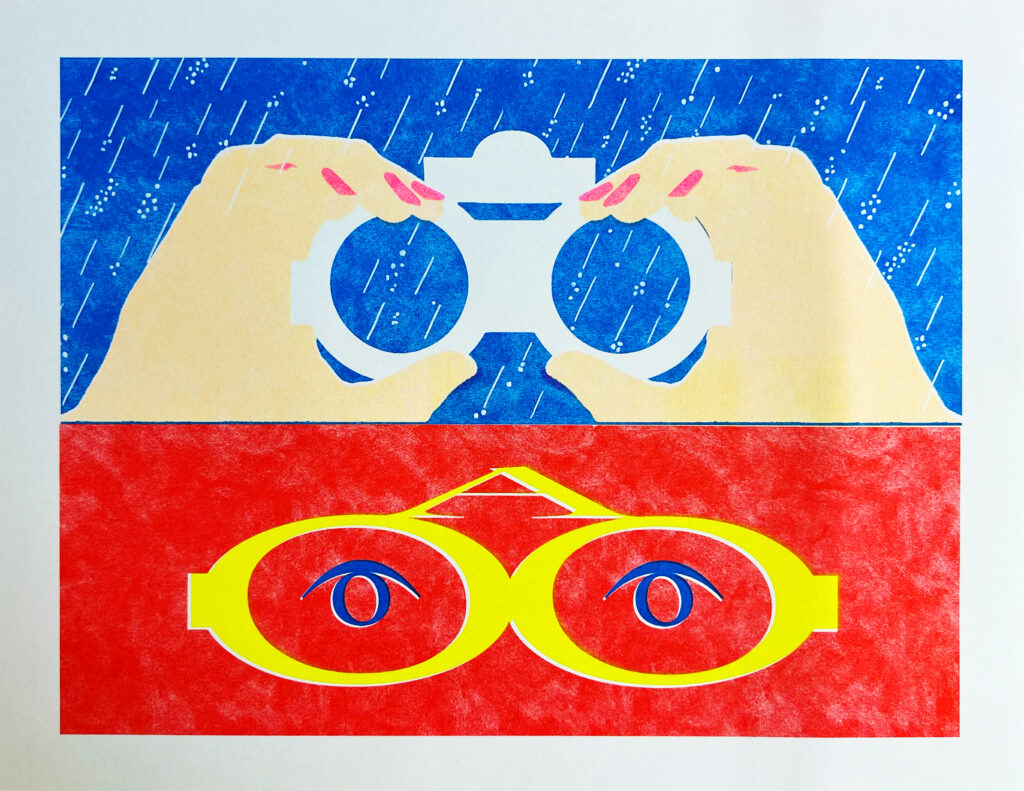
In computer systems, files come in various formats. I started imagining what it would be like if every creature had its own format. This got me thinking—could creatures be simplified into typography, pixel or even have an inner essence that does not match their appearance? To explore this, I take objects around me and give them my own artistic language. Risograph printing adds a gentle, spontaneous touch to my work, making it feel soft and alive.
Where do you make your work?
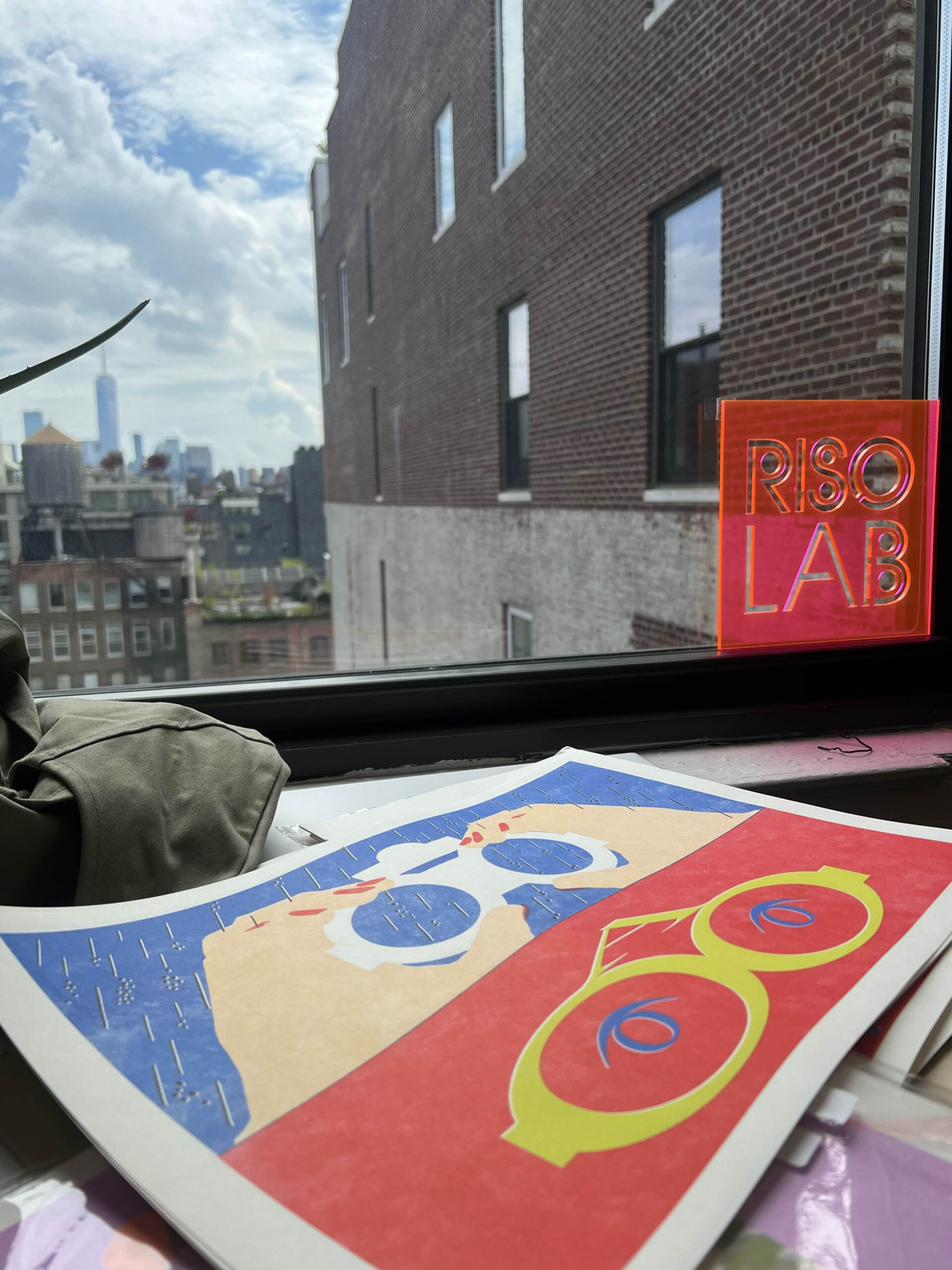
In my apartment, I enjoy creating digital art using my iPad or laptop. When I want to print using risograph, I head to Risolab at SVA in NYC—a fantastic professional space for risograph printing and where I first ventured into this art form. The view of downtown NYC adds a peaceful touch to my artistic process.
What are your favorite materials to use? Most unusual?
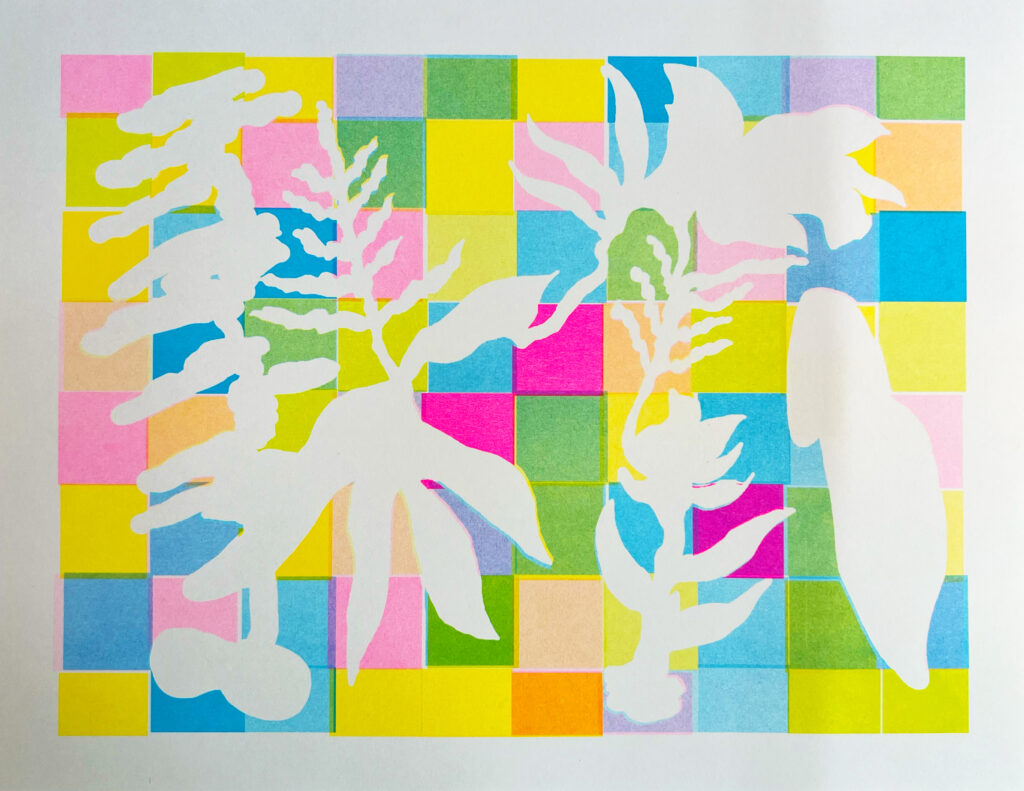
For the past two years, I’ve been using a Risograph to print my artwork. What initially drew me in were the vibrant neon colors that regular printers couldn’t replicate. The printing process is akin to silkscreen, but it’s on my machine. I particularly enjoy the layer-by-layer approach. Each layer introduces a new color, and though the process is repetitive, the beauty lies in its potential surprises. Occasionally, my alignment isn’t perfect, resulting in a unique overlap, much like receiving an unexpected gift during the art-making process.
What historical and contemporary artists inspire you?
Henni Alftan’s work deeply inspires me. She skillfully focuses on specific daily moments, like raindrops and shadows, and delicately expands on them, expressing profound emotions. Her gentle and tender brushstrokes captivate me.
When did you decide you wanted to be an artist?
Since my earliest memories, I’ve had a passion for drawing, doodling with a pen on any available surface. The desire to express myself through art stuck with me. It wasn’t a specific moment; it was just a part of who I was. When college came around, I pursued my love for drawing by majoring in Illustration. That decision marked my journey towards becoming a professional artist.